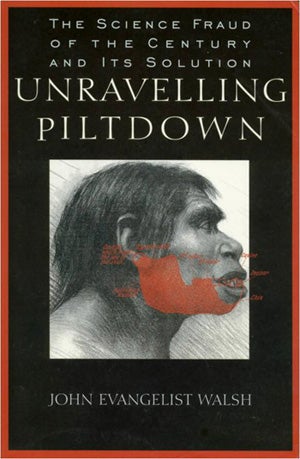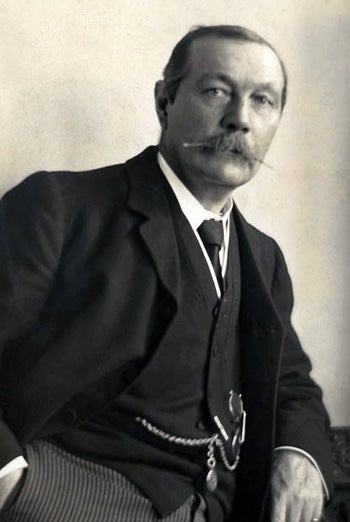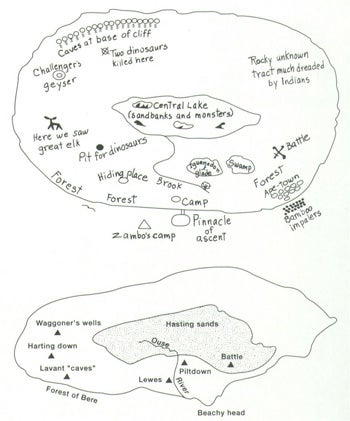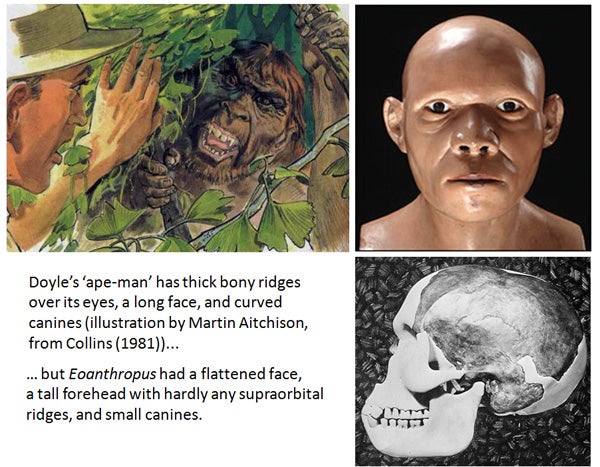This article was published in Scientific American’s former blog network and reflects the views of the author, not necessarily those of Scientific American

Walsh (1996), a volume consulted during the creation of this article.
In 1908, amateur geologist and solicitor Charles Dawson claimed the discovery of a new and exciting fossil that, so it was thought, shed substantial light on the ancestry of humans. Dubbed Piltdown man, and technically named Eoanthropus dawsoni, it was (... spoiler...) eventually shown to be a hoax – one of the most nefarious, infamous and successful scientific hoaxes of all time.
You know all of this already. In the previous article we looked at the fact that Piltdown man never was accepted with open arms by the scientific community as a whole. On the contrary, experts in the UK, USA and continental Europe all expressed considerable doubt about the homogeneity of the material. Anyway, there are a great many stories attached to the Piltdown man arc, and in this article I’m going to cover another one.
On supporting science journalism
If you're enjoying this article, consider supporting our award-winning journalism by subscribing. By purchasing a subscription you are helping to ensure the future of impactful stories about the discoveries and ideas shaping our world today.
Regular Tet Zoo readers might know that I have a long-standing research interest in the fossil dinosaurs (and other tetrapods) of the Lower Cretaceous English rock unit known as the Wealden Supergroup. The Wealden is one of the most famous rock units in the world and is formed of sediments deposited in both the Wessex Basin (corresponding to the Isle of Wight) and the Weald Basin (corresponding to the Weald of south-eastern mainland England). But the Weald doesn’t just yield these Cretaceous, Wealden fossils. Far younger ones, dating to the Pleistocene, are preserved in the younger sediments of the region, and among them were, supposedly, the remains of Piltdown man and a contemporaneous fauna of proboscideans and other mammals.
But how is this provenance-based data relevant to the hoax?

Arthur Conan Doyle, photographed in 1914 by Walter Benington. Image in public domain.
In 1912, Arthur Conan Doyle published his novel The Lost World. The story’s general theme is well known, as is the fact that Doyle essentially single-handedly invented what is today a mainstream sci-fi trope. Far less well known is the claim that Maple White Land, The Lost World’s fictitious Brazilian plateau, was based on the Weald. At least, this is what researchers John Winslow and Alfred Meyer proposed in 1983, this being one small aspect of a far grander story in which the perpetration of the Piltdown hoax was pinned on Doyle (Winslow & Meyer 1983). Doyle lived only about 11 km from Barkham Manor (the Piltdown man discovery site), visited the excavations at least once, and was extremely knowledgeable as goes anatomy, geology, palaeontology, and the science and art of sleuthing and hoaxing. This is the man who invented Sherlock freaking Holmes. Could, Winslow and Meyer asked, Doyle have been behind the Piltdown hoax?
No. Not only was Winslow and Meyer’s case wholly circumstantial and involved a great many speculations and guesses (maybe Doyle did this, maybe he did that), pointing the finger at Doyle ignores his upstanding character, strong moral conviction, and packed schedule during the years concerned. Sure, we know that Doyle visited Barkham Manor once, but the planted fossils that were found there were discovered on over twenty separate occasions. A vague idea that Doyle’s strong interest in spiritualism instilled in him a desire to belittle or ruin the ‘realists’ of the day (Winslow & Meyer 1983) is also erroneous, since Doyle didn’t properly develop this belief until 1916 (it was mostly catalysed by the events of World War I) and it cannot be linked with any hypothetical involvement in the Piltdown affair. Winslow & Meyer (1983), incidentally, weren’t the only authors to propose Doyle as the hoaxer, but this idea has always come under heavy and appropriate criticism when put forward.

Maple White Land (above) compared to a simplified, schematic map of the English Weald. From Lucas (1994).
Also part of Winslow and Meyer’s case was their claim that Doyle’s map of Maple White Land is (cough) clearly based on the Weald (Winslow & Meyer 1983). Maple White Land had a lake in the middle, a river running north-south in its southern half, an ‘Iguanodon glade’ to the east of the river, a place where giant deer were seen in the west, a precarious ‘pinnacle of ascent’ in the south, and a place where a battle occurred in the east. In the Weald, a rock group known as the Hastings Group (originally, and traditionally, the Hastings Sands) forms (so claimed Winslow and Meyer) a vaguely lake-shaped outcrop in the centre of the region, the River Ouse runs north-south, Lewes (where Iguanodon was first discovered) is close by, Harting Down is in the west (‘Harting’ = obvious link with deer), the precarious Beachy Head is in the south, and the town of… Battle is over to the east (sort of).
In The Lost World, Malone (the main character) encounters an ape-man, and does so near the Iguanodon glade (Doyle 1912). When we compare the map of Maple White Land with that of the Weald, we see (so claimed Winslow and Meyer) that this spot corresponds approximately with the real-life location of Piltdown. Was Doyle’s ape-man a heavy-handed reference to Piltdown man? Winslow and Meyer thought so, but what they missed is that the ape-man in The Lost World is categorically unlike Piltdown man, a point emphasised by John Walsh in his critique of Winslow and Meyer’s case (Walsh 1996). Piltdown man was supposed to have a big, human-like brain, flattened brow region, and an ‘ape-like’ jaw (albeit with straight canines far smaller than those associated with ‘apes’). But Doyle’s ape-man is very different, with a thick, heavy brow and prominent, curved canines (Doyle 1912).

As if it’s not already obvious, those supposed similarities between Maple White Land and the Weald are all terribly vague and not especially compelling – the locations don’t really match at all and the real-life geographical features that Winslow pointed to are not similar to the features of Maple White Land (Walsh 1996). In any case, we have quite good reasons for thinking that Doyle invented Maple White Land after learning about some key localities in South America, most notably the Huanchaca Plateau in Bolivia. Winslow and Meyer’s idea was discussed favourably (as if it were likely true) in Spencer Lucas’ Dinosaurs The Textbook (Lucas 1994), though Winslow and Meyer are neither mentioned nor cited in that book. No comment.
In the end, this whole proposal of a link between Piltdown man and a fictional land full of dinosaurs and pterosaurs never did warrant serious consideration, nor was there ever a good case to be made for Doyle being the hoaxer.
For previous Tet Zoo articles on Piltdown, and on hominins and other primates, see...
Marmosets and tamarins: dwarfed monkeys of the South American tropics
Nasalis among the odd-nosed colobines or The “Nasalis Paradox” (proboscis monkeys part II)
Refs - -
Collins, J. 1981. The Lost World. Ladybird Books, Loughborough.
Doyle, A. C. 1912. The Lost World. Hodder & Stoughton, London.
Lucas, S. 1994. Dinosaurs The Textbook. Wm. C. Brown Publishers, Dubuque, Iowa.
Walsh, J. E. 1996. Unravelling Piltdown. Random House, New York.
Winslow, J. & Meyer, A. 1983. The perpetrator at Piltdown. Science 83 September 1983, 33-43.